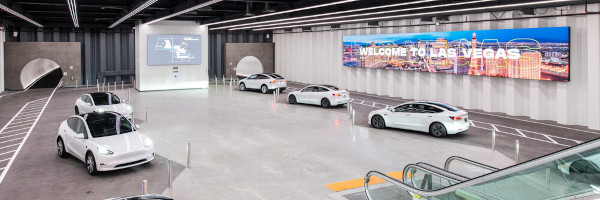Right-of-way Management
| Transportation | ||||||
|---|---|---|---|---|---|---|

| ||||||
| Sectors | Transportation | |||||
| Contact | Wilfred Pinfold | |||||
| Topics |
| |||||
Activities
| ||||||
- Authors
Right-of-way management is the process of planning, coordinating, and maintaining the use of land that is reserved for transportation purposes, such as roads, highways, and public transit systems. Right-of-way management involves managing the use of the land and infrastructure within the right-of-way, as well as coordinating the activities of the various entities that may use the right-of-way, such as utilities, public agencies, and private contractors.
Right-of-way management involves a variety of tasks, including:
- Planning and design: Determining the best use of the right-of-way for transportation purposes, and designing the infrastructure and amenities that will be included within the right-of-way
- Acquisition: Obtaining the necessary land and easements for the right-of-way through negotiation or eminent domain
- Maintenance: Maintaining the infrastructure and amenities within the right-of-way, including roads, sidewalks, traffic signals, and other features
- Enforcement: Ensuring that the right-of-way is used safely and efficiently, and enforcing rules and regulations related to its use
Effective right-of-way management is important for ensuring the safety and efficiency of transportation systems and for minimizing the impact of transportation-related activities on the surrounding community.
Highways
The planning, construction, and maintenance of highways is typically the responsibility of state or federal government agencies, depending on the location of the highway and its intended use. In the United States, the Federal Highway Administration (FHWA) is a division of the U.S. Department of Transportation that is responsible for the planning, construction, and maintenance of the National Highway System, which includes interstate highways and other major roads. The FHWA sets standards and guidelines for the design and construction of highways, and provides funding to states and local governments for highway projects.
In addition to the FHWA, state departments of transportation (DOTs) are also responsible for the planning, construction, and maintenance of highways within their respective states. State DOTs typically have their own design standards and guidelines, and they also work with local governments and other agencies to plan and implement highway projects.
Local governments may also be involved in the planning and construction of highways, particularly if the highway is intended to serve a local area or if the local government is contributing funding for the project.
Roads
The planning, construction, and maintenance of roads is typically the responsibility of state or local government agencies, depending on the location of the road and its intended use. In the United States, state departments of transportation (DOTs) are typically responsible for the planning, construction, and maintenance of roads within their respective states. State DOTs have their own design standards and guidelines, and they also work with local governments and other agencies to plan and implement road projects.
Local governments, such as cities and counties, are also often responsible for the planning and maintenance of roads within their jurisdiction. These governments may have their own departments or agencies that are responsible for managing roads, or they may contract with private companies or other agencies to perform these tasks.
In addition to state and local governments, federal agencies may also be involved in the planning and construction of roads, particularly if the road is intended to serve a regional or national transportation network. The Federal Highway Administration (FHWA), a division of the U.S. Department of Transportation, is responsible for the planning, construction, and maintenance of the National Highway System, which includes interstate highways and other major roads. The FHWA sets standards and guidelines for the design and construction of highways, and provides funding to states and local governments for highway projects.
Public Transit Systems
The responsibility for public transit systems is typically held by government agencies at the local, regional, or national level, depending on the size and scope of the system. In many cases, the responsibility for public transit is shared among multiple levels of government, with each level playing a role in the planning, funding, and operation of the system.
At the local level, city or county governments may be responsible for the operation of public transit systems within their jurisdiction. This could include managing the day-to-day operations of the system, such as scheduling, dispatch, and maintenance, as well as setting fares and routes. Local governments may also be involved in the planning and construction of new transit infrastructure, such as bus or light rail lines.
At the regional level, public transit systems may be operated by regional transit agencies, which are responsible for coordinating the transit services of multiple cities or counties within a specific area. These agencies may be responsible for setting fares and routes for the entire region, and for securing funding for the operation and expansion of the transit system.
At the national level, the federal government may be involved in the funding and regulation of public transit systems through agencies such as the U.S. Department of Transportation. The federal government may also set standards and guidelines for the operation of transit systems, and provide funding for the construction of new transit infrastructure.
Walking and Biking Paths
The planning, construction, and maintenance of walking paths is typically the responsibility of state or local government agencies, depending on the location of the path and its intended use. In the United States, state departments of transportation (DOTs) are often responsible for the planning, construction, and maintenance of walking paths that are located within state-owned rights-of-way, such as along roads or highways. State DOTs may work with local governments or other agencies to plan and implement walking path projects.
Local governments, such as cities and counties, are also often responsible for the planning and maintenance of walking paths within their jurisdiction. These governments may have their own departments or agencies that are responsible for managing walking paths, or they may contract with private companies or other agencies to perform these tasks.
In addition to state and local governments, non-profit organisations and private companies may also be involved in the planning, construction, and maintenance of walking paths. For example, a non-profit organisation might work with a city government to develop a walking path along a local river, or a private company might build and maintain a walking path as part of a new residential development.
Private Roads
The planning of private roads typically involves a variety of individuals and organisations, including engineers, planners, regulatory agencies, and the private owner or developer of the road.
Private roads are typically built and maintained by a private owner or developer, such as a residential development company or a business park. The owner or developer would typically have a team of engineers and planners who are responsible for designing the road and identifying the most appropriate route for the road to take. This team would also be responsible for developing a construction plan and identifying any potential challenges or issues that may arise during the construction process.
The planning process for a private road would also involve obtaining the necessary permits and approvals from regulatory agencies, such as the local government agency responsible for land use and transportation planning. These agencies would review the plans for the road to ensure that it meets all relevant safety and environmental standards.
In addition to these technical and regulatory considerations, the planning process for a private road may also involve engaging with community stakeholders and obtaining their input and feedback. This could include holding public meetings and working with local organizations to address any concerns or issues that the community may have about the road project.
Boring Company Tunnels
The Boring Company is a private infrastructure and tunnelling company founded by Elon Musk. The company's primary focus is on the development of tunnelling technology and the construction of tunnels for various purposes, such as the transportation of vehicles and pedestrians.
One of the main goals of The Boring Company is to reduce traffic congestion in urban areas by creating an alternative transportation network of tunnels. The company is developing a tunnelling system that utilises electric skates, which are vehicles that can transport cars, pedestrians, and bicycles through the tunnels at high speeds. The Boring Company has also proposed the use of these tunnels for the transportation of goods, such as packages and groceries, as well as for the storage of excess energy from renewable sources.
In addition to its tunnelling projects, The Boring Company is also involved in the development of other infrastructure-related technologies, such as the production of bricks made from tunnelling waste material and the design of rapid-transit elevators for use in high-rise buildings. The company has completed a number of tunnelling projects to date, including a demonstration tunnel in California and a tunnel for the Las Vegas Convention C enter.
Urban Speed electric vehicles
Urban Speed electric vehicles can interact with the current built environment in new ways. For example, rather than consider curb pick-up and drop-off these vehicles can come into building spaces without polluting the environment. Picking up directly from transit stops and dropping off in schools, hospitals, universities and offices protects passengers from the elements in ways that have not been possible before. Covered transfer facilitates better protection for patients and people with disabilities.
Similarly last mile freight carried by vehicles that can come into warehouses and factories offers many benefits including clearing the streets. These driver less delivery vehicles and small autonomous drones can ferry groceries and other packages to customer’s front doors on demand for a low cost. Building hub-and-spoke delivery systems, optimising freight routes, and scheduling deliveries to minimise congestion can significantly reduce costs and improve convenience. Reducing dwell and idle time or getting vehicles off the street completely during delivery requires coordination with public and private concerns, zoning officials, parking authorities, freight services, and building/site managers.
One advantage of autonomous urban speed electric vehicles is that there is no reduction in efficiency, increase in cost or increase in pollution for a larger number of small vehicles. The vehicle can therefore be sized for the appropriate purpose. For example picking people up or dropping packages at home can be done with a small vehicle whereas taking people or deliveries to a work campus like Intel or Nike can be done with a bus or delivery truck.












